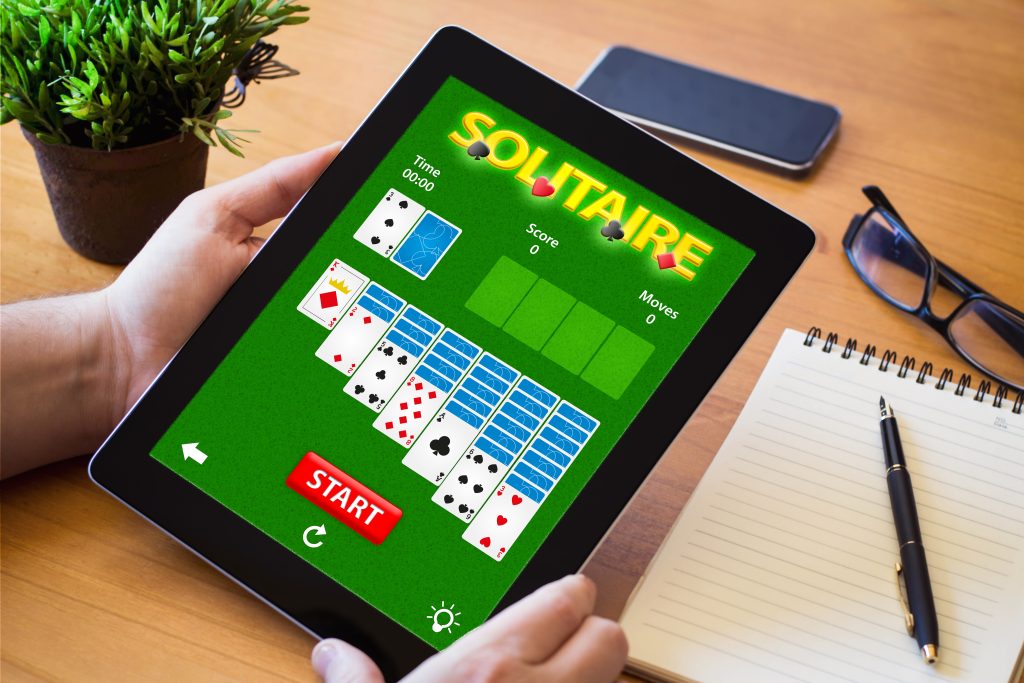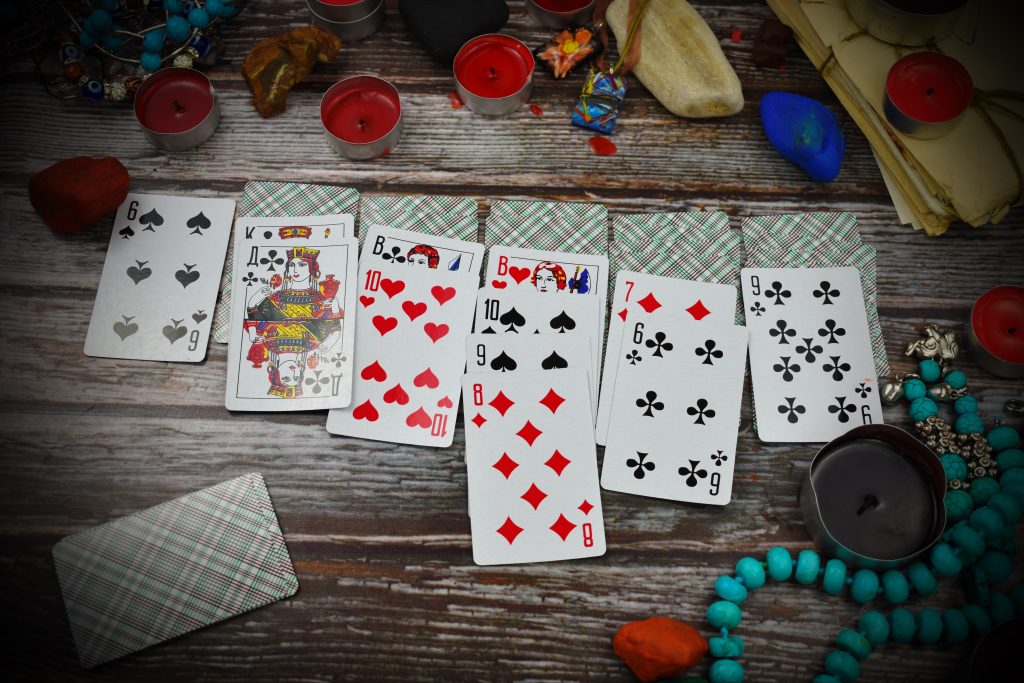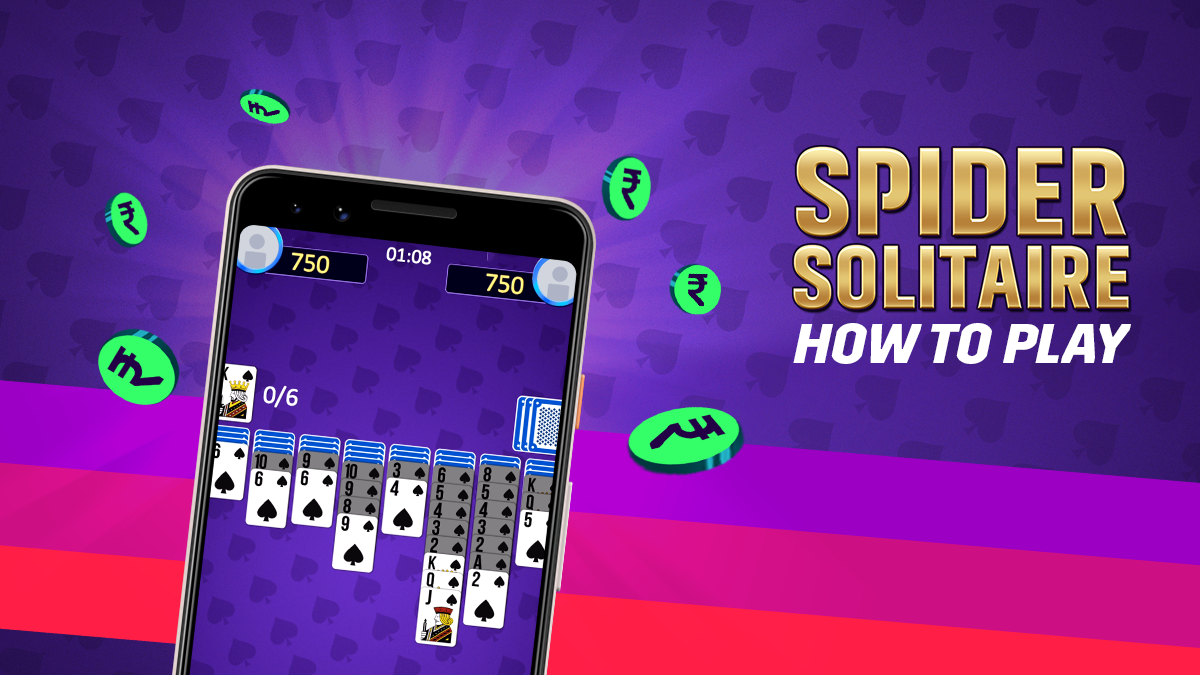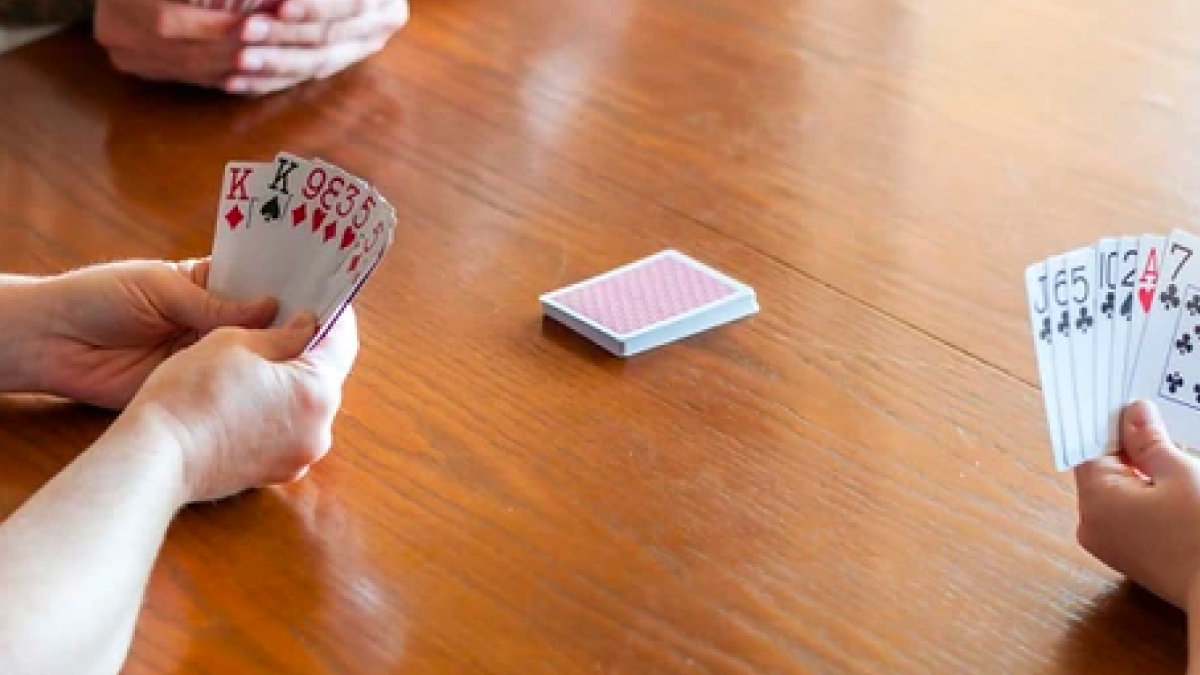Table of Contents
ToggleSpider Solitaire is one of the most entertaining card games amongst Solitaire enthusiasts. The unique feature of this Solitaire game is that you can alter the difficulty level by using different numbers of decks. In today’s smartphone era, the virtual version of the game is always available at your fingertips.
Generally speaking, Spider Solitaire is a single-player game played with two decks of cards. The numerous variations of Spider Solitaire even use 1, 3, or 4 decks. Also, multiple suit game variations exist. Regarding card movements, the one-suit version is slightly different from the two-suit version and the four-suit version — the fewer the suits, the easier (and faster) the gameplay. Regardless of the variant, the same basic rules of the game apply whenever you are playing Spider Solitaire.
Follow this quick guide to learn how to play spider solitaire with the basic rules, strategy, and variations.
How To Play Spider Solitaire?

Source: McLittle Stock /shutterstock
Let’s take a look at how to play spider solitaire and unpack all the rules.
Objective
Arrange all the cards in descending order from King to Ace in the same suit. You must clear all the cards to win the game as per the spider solitaire rules.
Set-up
How do you play spider solitaire? The setup is always the first step. The game is played with two decks of cards (104 cards). The cards are dealt into 10 columns, with only the top card in each column is a face-up card. The remaining cards form a stockpile for drawing new cards.
Gameplay
You are allowed to move the topmost card of a pile along with every face-up card below it that follows in descending suit and sequence.
You can leave some cards behind and break a sequence of available cards at any point in the game. For instance, if a pile from top to bottom displays 4, 5, 6, 7, you can move either the first one, two, or three cards as a unit, but you cannot move the 7 before the preceding three cards are removed. When all face-up cards in a pile are removed, the next card underneath is turned face-up and becomes available.
Regardless of color or suit, you can place a movable unit of cards either in an empty space or on a card of the next higher rank to the unit’s bottom card. For instance, if the unit’s bottom card is a Jack, it can be moved onto any of the four Queens.
Only Kings can be moved into empty spaces. Alternatively, an empty space can be filled with any movable unit. When no productive moves are possible, the player deals a new row of ten face-up cards. Before doing so, all empty spaces must be filled. The final deal consists of just four cards, which are placed on the first four piles.
Also Read: 11 Tips, Hints, and Strategies to Win Spider Solitaire
Winning in Spider Solitaire
The player’s goal in Spider Solitaire is to build cards from K to A in a descending suit sequence within the tableau columns. When you form such a sequence, it gets automatically moved to one of the eight foundation piles. You win the game when all 104 cards have been played to the foundations as eight individual K to A stacks.
How do you play 2 Suits or 4 Suits Spider Solitaire?
The basic setup remains the same in all versions of the card game Spider Solitaire. They also have the same rules mostly. So, how to play Spider Solitaire 2 and 4 suit? Well, the game is played with two decks of cards from king to ace, i.e., 104 cards in total. The difference is in the number of suits used.
- 1 Suit: All cards belong to the same suit.
- 2 Suits: Here, the cards consist of two suits, usually Spades and Hearts.
- 4 Suits: All four suits are used, king to ace.
The cards are arranged in 10 columns, with only the top card in each column face-up. The goal is to create complete sequences from King to Ace in the same suit and remove them from the board. The game is won when all cards are cleared. In 2 and 4 Suit Spider Solitaire, the rules are slightly different. Take a look:
- Cards can be stacked on top of higher-ranked cards even if they are not from the same suit. For example, you can place a 4 of Hearts on a 5 of Spades even though they are not from the same suit, but they cannot be moved together as a group.
- You can only move groups of cards if they are in the same suit and in sequence. If the cards are mixed suits, they are “blocked,” meaning you must move them separately.
- Empty columns can be filled with any card, just like in 1 Suit Spider Solitaire.
- The game becomes harder as the number of suits increases because it’s easier to block important cards.
To win, you must clear all the cards by making eight complete suit sequences (two for each suit in 4 Suit Solitaire, four for each suit in 2 Suit Solitaire). Since more suits mean more difficulty, careful planning is necessary to avoid trapping important cards.
Spider Solitaire Strategy

Source: Victoria OM /shutterstock
Let’s look at the top strategies that can help you win the spider solitaire card games.
Plan Your Moves Carefully
Once you are aware of all spider solitaire rules, planning is the next step. Before making a move, think ahead. Moving cards just because you can block important sequence cards. Always try to uncover face-down cards and create empty columns for more flexibility in a spider solitaire online game.
Prioritize Same-Suit Sequences
In multi-suit games, mixing suits can block moves. Whenever possible, build sequences using the same suit to ensure smooth movement and avoid getting stuck later.
Create Empty Columns
Empty columns give you space to move sequences freely. To create one, clear a pile by moving its cards to other columns. Kings are the only cards that can be placed in an empty column.
Use the Stock Cards Wisely
Before dealing new cards, make sure you have made all possible moves. Filling empty spaces is required before drawing cards from the stock, so plan ahead to avoid getting stuck with difficult card placements.
Use Game Features Wisely
This is for those who choose to play spider solitaire online. It is always best to understand the platform well before you proceed so you can use the important features to help you with the game. For instance, use the undo button if necessary.
Read More: Top 30 Different Types of Solitaire Games
FAQs
What are other popular Solitaire games?
Other popular solitaire variations you can try are Klondike, FreeCell, Pyramid, and TriPeaks. Klondike is the classic version, while FreeCell needs a strategy. Pyramid and TriPeaks are fun and faster to play.
What is the history of spider solitaire?
Spider Solitaire became popular when Microsoft included it in Windows. It dates back to traditional Solitaire games but became widely known as a computer game in the late 1990s.
What are the rules of Spider Solitaire?
The spider solitaire rules say that the goal is to arrange cards in descending order from King to Ace. You can move sequences of the same suit together. Clear all cards to win the game.
How do you play the original Spider Solitaire game?
You start with 10 columns of cards. Move cards in descending order and try to clear full sequences. When stuck, deal a new row from the stockpile.








